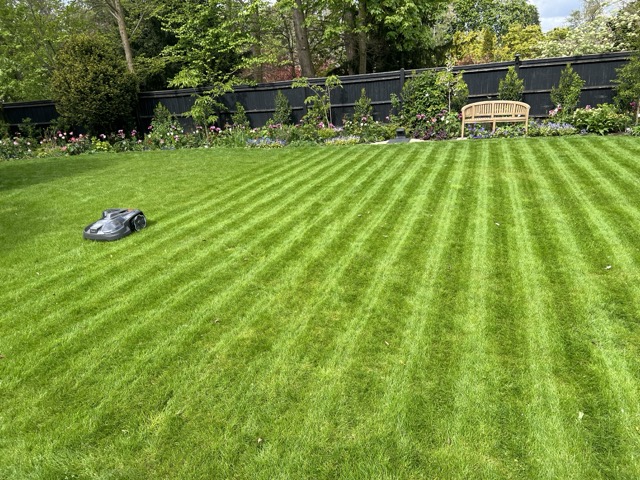Do you love your robotic lawnmower but are sick and tired of boundary wire cuts? The answer could be here with Husqvarna’s EPOS satellite mowing system. Read on for our test & review of the Husqvarna 320 NERA Automower using EPOS technology….
How EPOS Works
First, an explainer is definiely useful for the uninitiated. The Husqvarna EPOS (Exact Positioning Operating System) technology works in conjunction with their range of Automowers to offer a wire-free, highly accurate lawn mowing experience. Here’s a summary of how this system functions:
- Satellite Navigation: Unlike traditional robotic mowers that rely on boundary wires, the EPOS system uses RTK (Real Time Kinematic) GPS technology. This satellite-based navigation system provides centimetre-level accuracy, allowing the Automower to know its exact position in the garden at all times.
- EPOS Reference Station: The system requires an EPOS reference station which is installed on the property. This station continuously sends correction signals to the GPS, enhancing the mower’s positional accuracy.
- Virtual Boundaries: Homeowners can set up virtual boundaries through a mobile app. This flexible system means that boundaries can be adjusted without the need to physically move or install boundary wires. It’s particularly useful for complex garden layouts or for areas that require temporary exclusion, like seasonal flower beds.
- Automated Operation: With the boundaries set, the Automower operates autonomously within them. It can navigate around obstacles, manage slopes, and even return to its charging station when needed.
- Safety and Security: The enhanced GPS functionality not only guides the Automower in its mowing task but also adds a layer of security. The system can alert the owner if the mower leaves its designated area and can track its position if stolen.
- App Control and Monitoring: The system is managed through a mobile app, which provides control and monitoring capabilities to the user. Owners can start or stop the mower, schedule mowing times, and monitor the mower’s location and mowing path in real-time.
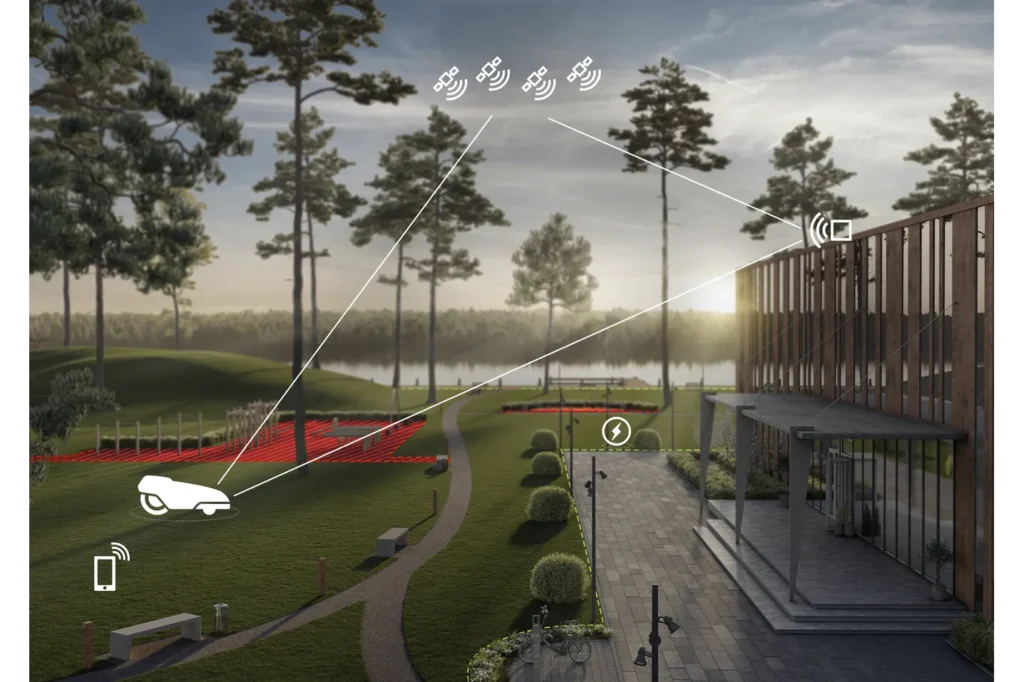
This integration of EPOS with the Automower allows for more precise, flexible, and efficient lawn maintenance, adapting to the needs of modern gardens without the limitations of physical wires.
Installation
The installation was a fairly quick affair. It involves a representative attending and setting up the EPOS reference station, connecting power to it and the base station charging unit and then mapping out the areas to be mowed, stay-out zones and transport paths.
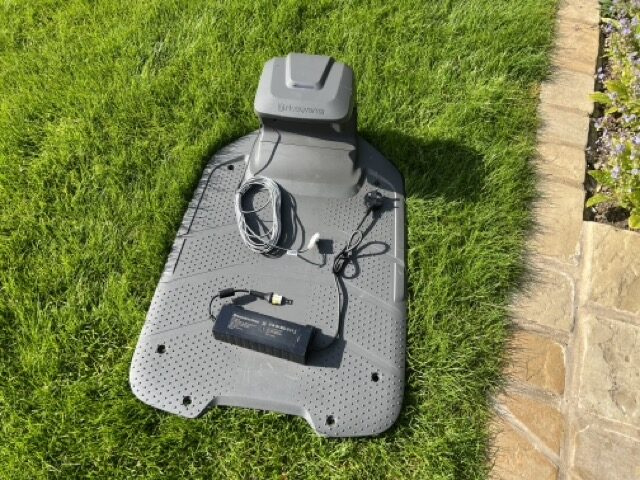

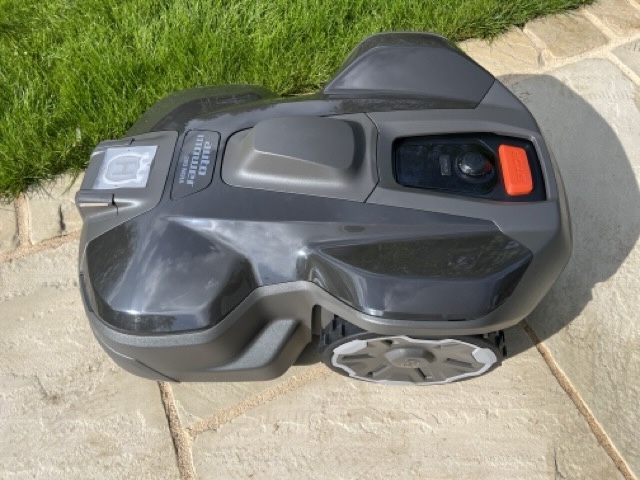
The installer had a bit of extra equipment to add the dropped pins, which is done to “map out” the boundary areas for each defined zone – a bit like how the previous iteration of technology used underground wires to achieve the same thing. Only this time, it’s virtual.
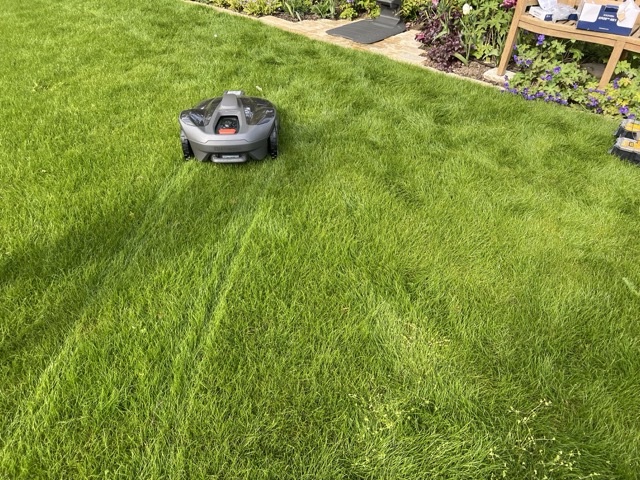
Once installed, the rep assisted with downloading the Automower app and showing how it works. From here, it was time to let the mower do its thing.
You can set up a schedule on the app which tells the mower which times and mowing areas to operate in. Within the app you also set the cutting height (which can be different for each mowing area or ‘zone’ if you prefer). The system allows for really quite precise flexibility.
Let it Mow
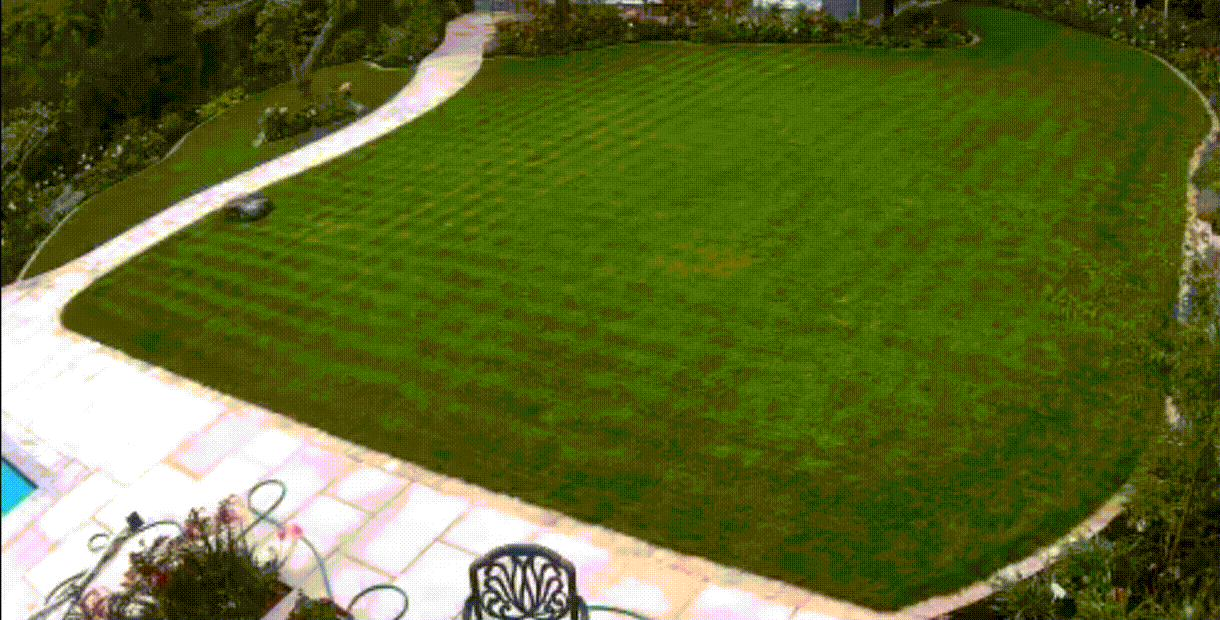
Once its set up, off the Automower goes.
This 320 NERA can cover large areas and very quickly covers the 2 sections as shown above (either side of the path). The speed is an improvement over boundary wire predecessors and I imagine this is because the mower actually keeps record of where it’s been as opposed to random movement that is guaranteed to eventually cover all area in a zone.
Patterns

One of the “issues” that boundary wire Automowers had was not being able to work in patterns. This is a big change if you like this sort of thing. It can not only do stripes, it can do cross-hatch and even triangles!
Not only that, but some models using the EPOS can also work in Edge mode, which means it can skirt around the edges of the grass to finish off that area. In other words, go around the edges of the area and cut the sides.
It’s not true “edging” like you will still need to do every now and again if you love maintaining very neat, close-cropped edges. In other words, taking those parts around the perimeter where the grass grows sideways underneath where the mower blades can reach.
This is also a really good positive improvement, as it was conspicuously missing before especially given that other mower brands (e.g. Robomow) has this a decade previously.
Update: June Mowing of season 1
In its first season of mowing, I had to do some renovations including scarifying (quite a nice amount of thatch came up) and also getting rid of some paspalum weeds (and subsequent overseeding in some quite big patches).
Here is the lawn about a month after that activity on level 3 mowing height:
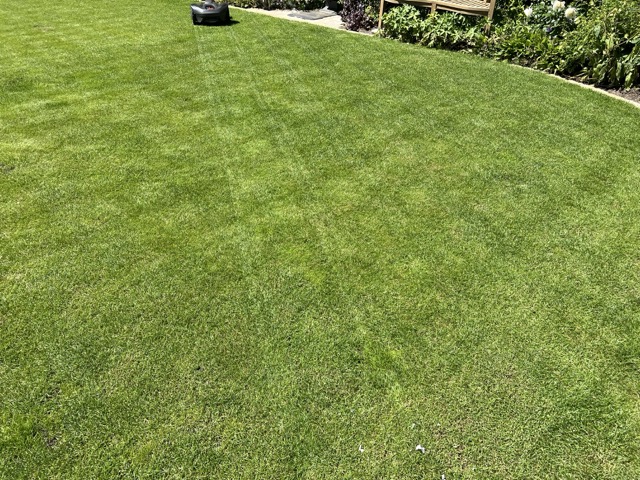
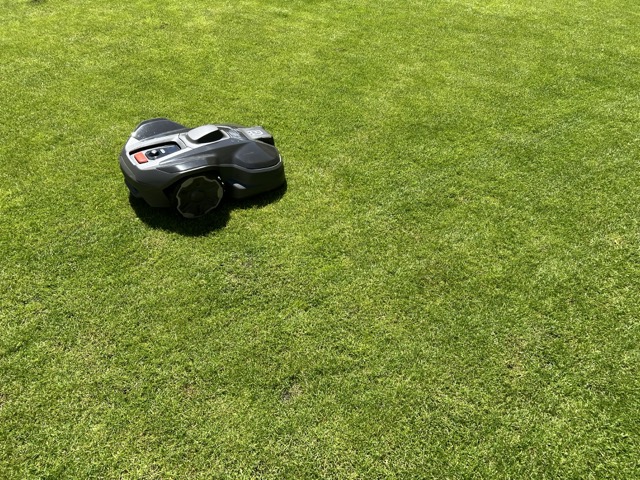
Teething issues & Considerations
Area Finetuning
The first thing you likely notice is that the dropped pins are not precisely positioned. The way that you can see this is when there are some areas of grass longer than others after a few mows!
Fortunately, moving the positions is really easy to do using the mobile app, which you will need Bluetooth switched on for.
In it, you can finetune the map are items by virtually moving them in any direction by a minimum of 1cm at a time. That’s some incredible level of control.
Front Areas (More remote location requiring transport path access)
To fully test the capabilities of the Automower, we had some grass verge strip areas at the front of the property to be set up as well as the main back garden sections. The transport path to these would be needed to access them as they are a good 50 metres from the base station.
Unfortunately, upon the first test this didn’t go according to plan. The Automower showed an error.
The representative popped in again to remedy the situation, and left for us to re-test. On the re-test, the transport path did not register properly again so I drove the mower manually to the areas out front.
Once there, the program was started but the mower still had issues. It was showing error messages and sitting still. It’s important to note that a line of site to satellites is needed for the EPOS unit installed on the Automower as well as the EPOS reference station.
Obstructions such as tree canopies or buildings can pose challenges for systems like the Husqvarna EPOS that rely on GPS for navigation. Here are a few ways these obstructions can affect the system:
- GPS Signal Blockage: Dense tree canopies can block or degrade the GPS signals reaching the mower. This can lead to reduced accuracy in positioning or occasional loss of signal.
- Positioning Errors: When GPS signals are weak or obstructed, the system might experience what’s known as “multipath errors” where signals bounce off surfaces before reaching the receiver, causing errors in the calculated position.
- Operational Inconsistency: In areas with heavy tree coverage, the Automower may struggle to maintain consistent operational performance. The mower might pause or stop if it loses GPS signals, which can lead to incomplete mowing tasks.
Purchasing a 320 Automower with NERA
The units including all that’s needed to install is available from Husqvarna direct. Look at the image below that shows some of the main components in the package. The base station which is also included is not pictured.

You can save a considerable amount of money if you install it yourself instead of paying a hefty fee to a local dealer. Obviously, you’ll need to read the manual and spend some time becoming familiar with the setup first, so it’s a bit of a trade-off.
However, as you’re going to be the one maintaining the equipment, it’s not a bad option to get to know all that you can about it. Husqvarna also has customer support that you can refer to.
Ongoing Review
This is a “living review” so more will be added as further progress and testing happens.
The Husqvarna 320 NERA with EPOS official page:
https://www.husqvarna.com/uk/robotic-lawn-mowers/automower-320nera-with-husqvarna-epos
